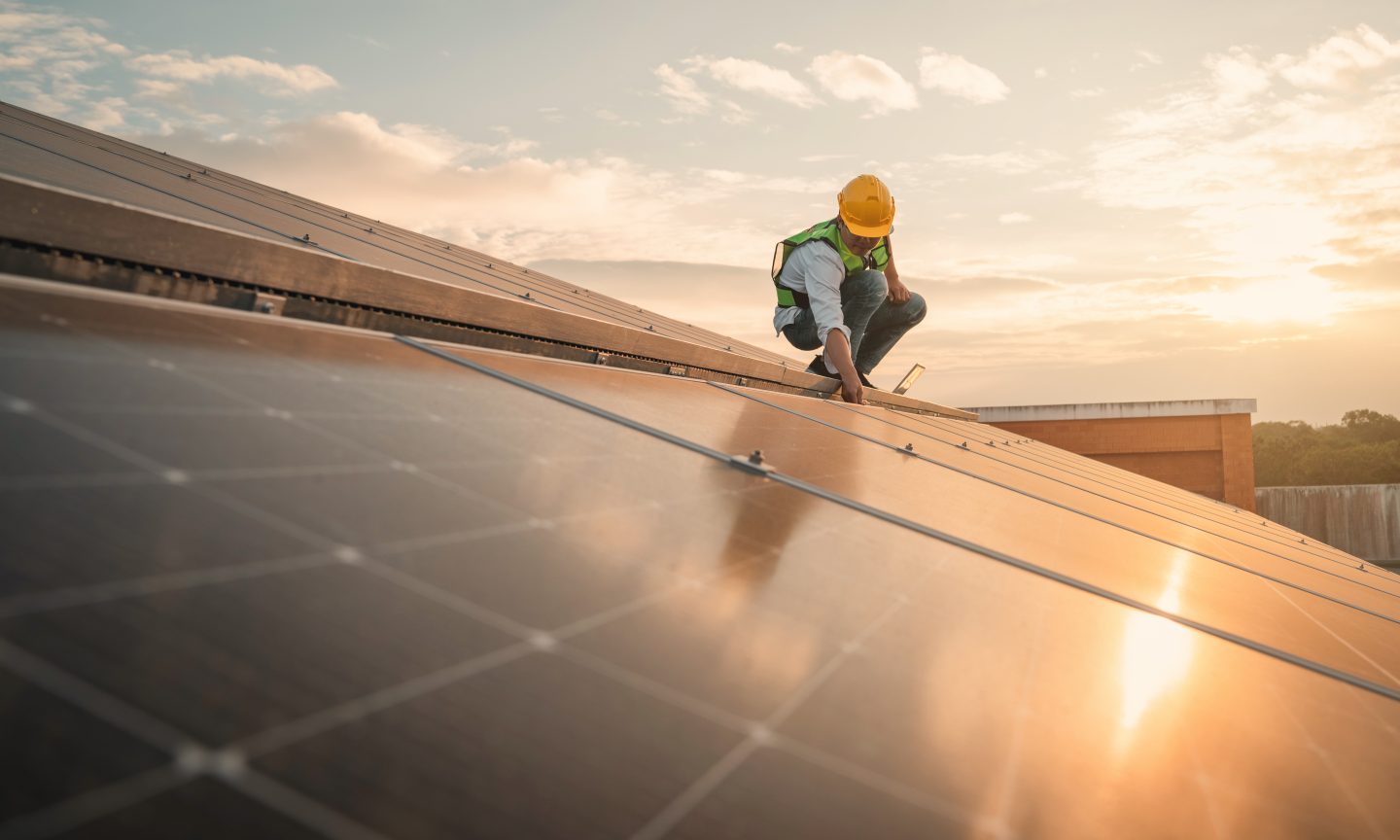While the idea of solar energy is appealing, many people are still in the dark when it comes to how solar panels work. Learn more about how solar panels harness the power of the sun as you evaluate the pros and cons of adding residential solar to your home.
How does solar energy work?
Solar panels contain photovoltaic cells that release electrons when sunlight shines on them. The electron release creates an electrical current. An inverter collects the electricity from the panels and converts it from a direct current (DC) to an alternating current (AC) that’s usable in homes and appliances.
Though the idea of solar energy is appealing, many people are still in the dark when it comes to how solar panels work. Learn more about how solar panels harness the power of the sun as you evaluate the pros and cons of adding residential solar to your home.
From sunshine to energy in your home
Whenever a material encounters energy, such as heat or light, changes happen. Some materials called semiconductors release electrons when sunshine hits them. Silicon is the most commonly used semiconductor, allowing solar panels to turn sunshine into electricity
.
“In short, solar panels capture energy from sunlight and convert it into electricity using the photovoltaic effect,” said Dan Massaad, CEO of Florida-based solar installer Guardian Home, in an email. “Each solar panel consists of multiple photovoltaic cells made of semiconductor materials like silicon, which absorb sunlight and release electrons to generate electricity. These panels are connected, allowing the electricity to flow for immediate use or storage.”
Solar panels generate direct current (DC) electricity, and an inverter converts that power to alternating current (AC) electricity so that it can be transmitted to the home and the power grid.
New microinverter technology has rapidly gained market share over string inverters for solar panels since their first installation in 2006.
“Microinverters are devices used to convert direct current (DC) from individual solar panels into alternating current (AC) for use in homes or businesses,” Massaad said. “Unlike traditional string inverters, which convert the electricity from multiple panels at once, microinverters work on each panel independently. This offers several advantages like efficiency, safety, and flexibility thus part of the reason for their growing popularity.”
Going off the grid
There are two primary installation strategies for solar panels: as part of a grid-connected system, or as an off-the-grid system. Some systems have the components to do both of these processes.
Grid-connected systems send solar energy to the overall electricity grid, essentially selling power to your local energy provider utility. In most cases, being grid-connected lets you tap into the grid if you need more power than you can generate with your solar panels, like at night.
Utilities often pay homeowners (via a billing credit on their electric bills) for solar energy they send to the grid. This is called net metering or net billing, and there are often restrictions and fees, depending on your state’s net metering rules. In general, people with grid-connected systems see much lower electricity bills than those without grid-connected systems, but the details matter when it comes to deciding if the benefit is worth it for your particular home.
Off-the-grid solar projects usually rely on a solar battery to store excess solar power for use at night or another time. These systems are helpful in remote locations without grid access and for greater energy independence in the case of power outages.
Some people opt to have both a battery backup and a grid-connected system, so that if the electricity company experiences a power outage, they have the benefits of an off-the-grid system but can otherwise sell their excess energy to the power company the rest of the time.
How do solar panels give electricity to a house?
-
Typically, a solar panel installer will assess a home’s roof or a land parcel for the feasibility of using that space for solar. This process notes any shading, the angle of the roof and the average sunshine in that area. The installer designs a proposed system and a price quote. The solar quote will estimate how many solar panels will be included and will offer rough estimates of how much power these panels will generate. Reputable companies will warn you if shade, roof angle or cloud cover will reduce the electricity your solar panels can generate.
-
Once you accept a quote for a job, the solar installer will securely mount the solar panels to your roof or to a mounting system on the ground, if that’s the path you’re taking.
-
Next, the installer will wire the panel together, as well as either into an off-the-grid battery system, an interconnection with the utility company’s lines or both.
If your solar panel system will connect to the electric grid, you’ll need to submit permits or paperwork of various kinds. Reputable installers will be very familiar with the interconnection process and in most cases will submit the paperwork for you. Once you’ve communicated with the electric company, you can officially generate solar power with your solar panel system.
Solar panels tend to last between 20 and 30 years, after which you may need to replace some or all of the system. Although many systems require only some basic maintenance, any repairs to the panels or the roof will require someone to unmount and remount the solar panels. This can create a cost down the road, especially if you know you may need to install a new roof.

